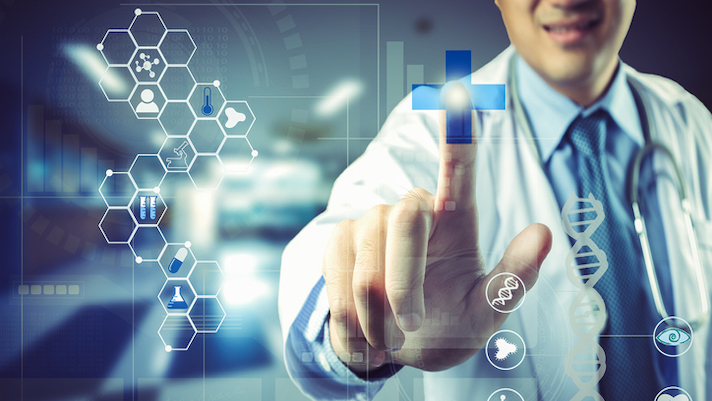Every year, advancements in medical research and technology bring about positive changes, like improved health, longer lifespans, and more effective medical treatment alternatives. As a consequence of developments in medicine, the average life expectancy of a person has grown from 45 years in the year 1850 to approximately 80 years in more recent years. In addition, scientists are of the opinion that life expectancy will continue to increase, despite the fact that it is anticipated that this trend will eventually hit an inflexible ceiling.
Developments in diagnostics, medical equipment, surgical practices, and pharmaceuticals are only a few of the many areas of medicine that have contributed to an increase in life expectancy in recent decades. And, their influence on average life expectancy may be seen in the form of better lives, preventative care, earlier and more accurate medical diagnosis, and improved treatment quality when a diagnosis has been made.
This article provides an in-depth investigation of the ways in which the advancement of medical research and technological innovation have led to increased life expectancy.
Adopting Healthy Lifestyles and Practicing Preventive Medicine
The necessity to lead healthy lifestyles is becoming more and more obvious to people. This may be accomplished by improving one’s food and nutrition, engaging in regular physical activity, working to preserve one’s mental and emotional health, and undergoing routine medical and physical examinations.
In recent years, this has been a major driving force behind the expansion of the fitness and healthcare wearables market. These wearables give users the ability to monitor their own health and maintain tabs on their vital signs. IDC states that the global market for wearables set a new all-time high during the fourth quarter of 2021 (4Q21), with shipments reaching 171 million units. This is an increase of 10.8 percent compared to the same quarter of the previous year.
Wearable technology has advanced to the point that it can perform a wide variety of activities. These include fitness trackers, smart health watches, wearable ECG monitors and blood pressure monitors, biosensors, and many others. It is possible to monitor, evaluate, and make predictions regarding one’s physical and mental well-being by combining them with mobile and digital apps. This adds on the broader trends toward telehealth and remote monitoring for preventive healthcare, which are aimed at problems such as the prevention of heart disease and stroke.
Diagnostics
Although they are not technically new to the market, wearables make it possible to collect data concerning several aspects of a person’s health. Wearables are making early diagnosis feasible, which may help with illness prevention and suggest improved therapies.
The incorporation of the findings of clinical laboratory tests into the process of diagnosing a patient is an essential component of clinical medicine. Since the 1920s, when Folin and Wu devised the first useful test for the quantification of serum glucose concentration, the selection of laboratory tests that are made available to doctors has grown at an exponential rate. They produced a vast array of options for diagnosis, monitoring of treatments and therapies, screening, and research on various diseases.
Treatment
Improvements in treatment outcomes are a direct result of digital developments in medical technology and practices. One area where progress has been made is in surgical therapies; specifically, there has been a movement toward more precise surgical operations and methods that are least invasive.
Some of the operations that have become possible as a result of developments in medical technology include robotic myomectomies, hysteroscopic surgery, and advanced laparoscopic surgery, all of which involve only a little amount of patient trauma. The disciplines of neurology, cardiovascular medicine, and interventional equipment are some other examples of medical specialties that have benefited from these technological breakthroughs.
Mobile medicine enables healthcare to be provided in locations other than hospitals and clinics by way of transportable and telehealth technologies. This significantly broadens the scope of healthcare. There are an infinite number of ways in which mobile medicine can make a positive contribution to the medical business. Some examples of mobile medicine include teleradiology, telepsychiatry, and tele nephrology.
Healthcare professionals are increasingly employing mobile medical devices and equipment to provide medical care and treatment to people it needs to reach, regardless of where they may be. Examples of mobile medical devices and equipment include medical workstations and telehealth technology. The proliferation of portable medical technology and gadgets is being fueled in large part by developments in low-cost sensor technologies, repeatability, low power consumption, and dependability, to name just a few of the essential factors.
Takeaway
The transition toward digital health care models is made possible by the combination of patient empowerment, the strategic application of digital technologies, data-driven care, and predictive care. This results in a redefinition of the experience and improvements in outcomes for patients’ life expectancy, as well as for health care providers.
However, the digitalization of the healthcare industry must exist within a single “patient-centered” paradigm. We need to move from traditional patient care at medical institutions to models built around the needs of the patient, which include comprehensive management of human health at all stages: from prevention and diagnosis to post-therapeutic support.


 Home
Home









